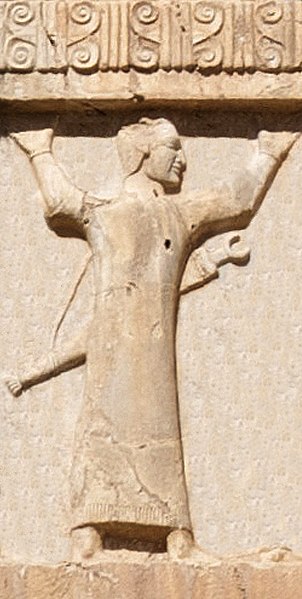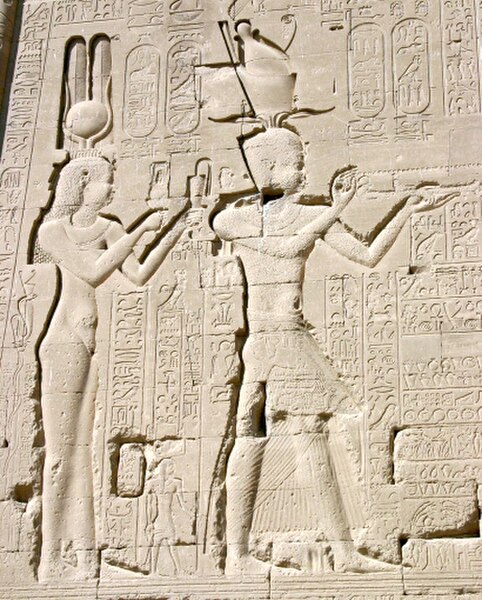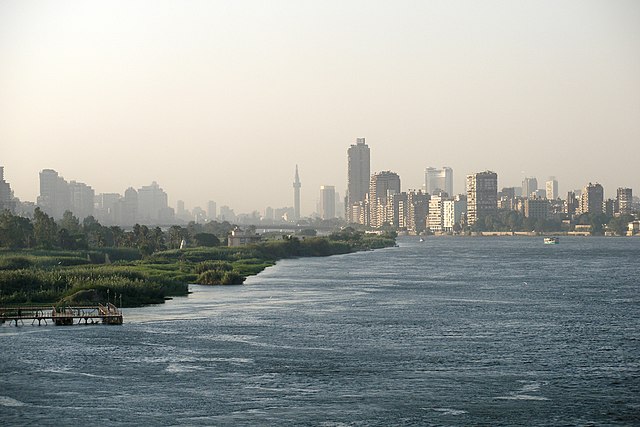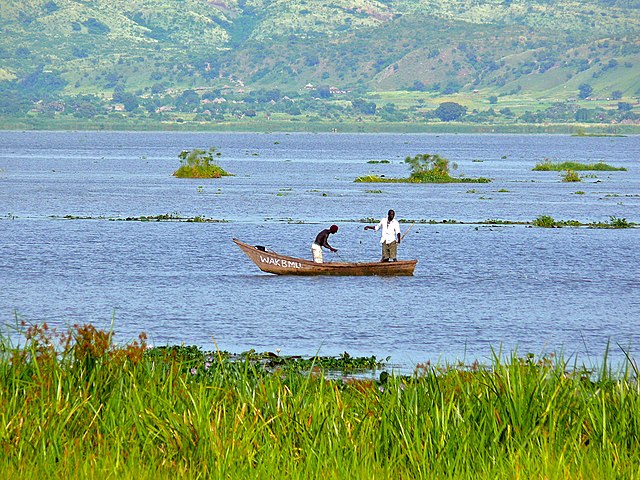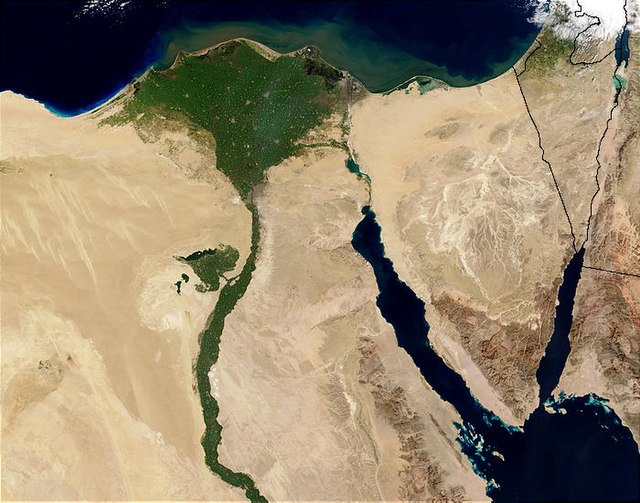The history of Egypt has been long and wealthy, due to the flow of the Nile River with its fertile banks and delta, as well as the accomplishments of Egypt's native inhabitants and outside influence. Much of Egypt's ancient history was a mystery until Egyptian hieroglyphs were deciphered with the discovery and deciphering of the Rosetta Stone. Among the Seven Wonders of the Ancient World is the Great Pyramid of Giza.
Artifacts of Egypt from the prehistoric period, from 4400 to 3100 BC. First row from top left: a Badarian ivory figurine, a Naqada II jar, a Bat figurine. Second row: a diorite vase, a flint knife, a cosmetic palette.
The Great Sphinx and the Pyramids of Giza, built during the Old Kingdom.
Egyptian soldier of the Achaemenid army, c. 470 BCE. Xerxes I tomb relief.
The Greek Ptolemaic queen Cleopatra and her son by Julius Caesar, Caesarion, at the Dendera Temple complex.
The Nile is a major north-flowing river in northeastern Africa. It flows into the Mediterranean Sea. The Nile is the longest river in Africa and has historically been considered the longest river in the world, though this has been contested by research suggesting that the Amazon River is slightly longer. Of the world's major rivers, the Nile is one of the smallest, as measured by annual flow in cubic metres of water. About 6,650 km (4,130 mi) long, its drainage basin covers eleven countries: the Democratic Republic of the Congo, Tanzania, Burundi, Rwanda, Uganda, Kenya, Ethiopia, Eritrea, South Sudan, Sudan, and Egypt. In particular, the Nile is the primary water source of Egypt, Sudan and South Sudan. Additionally, the Nile is an important economic river, supporting agriculture and fishing.
Nile in Cairo, Egypt
Spring at Lake Victoria
White Nile in Uganda
Nile Delta from space



